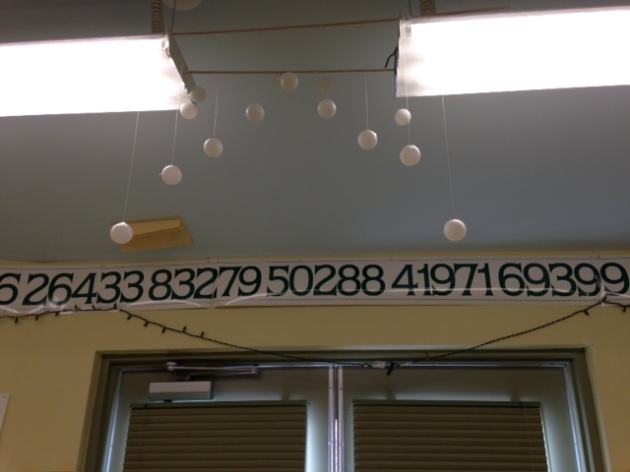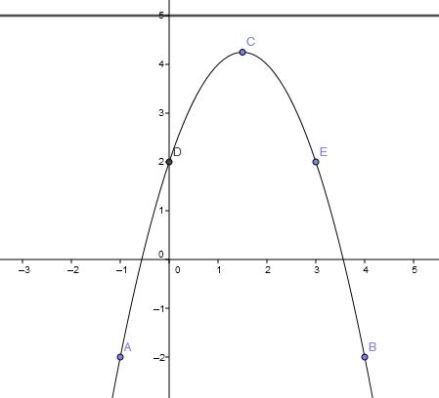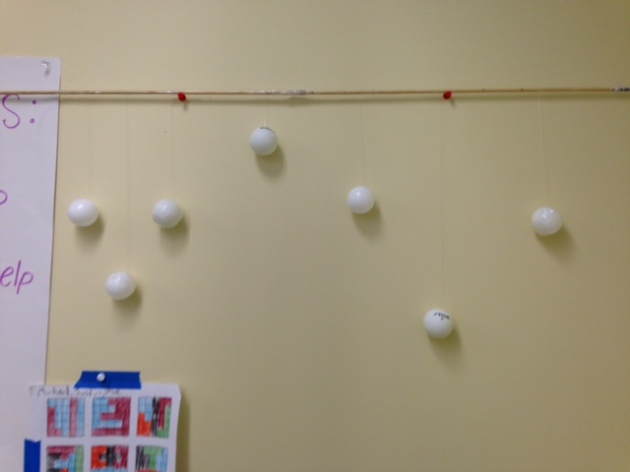Math 2 is starting a unit about quadratics. Eventually they’ll be doing the standard solving quadratics stuff but first we’re familiarizing ourselves with parabolas. I remembered seeing this awesome art installation and wanted to try and recreate it. After all, whenever something gets thrown in the air, its motion is quadratic – that’s just math! Theirs didn’t turn out quite the same as the ones at the art museum, but we achieved the intended effect.
I’m not sure what materials they had to work with at the Mustang Art Gallery, but in my class we were taping ping-pong balls to fishing line and dowel rods. There were some pitfalls with things getting tangled and un-taped, but my favorite mistakes were a little bit more process-oriented. To figure out the placement of the ping-pong balls, students plotted their quadratics using some type of grapher, either a calculator or Geogebra. I told them to decide what y-value the dowel rod was and find the distance from that to each point. This one has the dowel rod at y=5:
Geogebra will just measure that distance for you. You can also just subtract whatever the point is from whatever the dowel rod is, which led to this interesting mistake here – can you figure it out?
I think that the 2 points that should have been farther down were where the parabola crossed to be under the x-axis. For the example above, it’s pretty clear that 5 – 4 = 1 [C], and 5 – 2 = 3 [D]. It’s also entirely possible to get 5 – -2 = 3 rather than 7 [A].
The visual should make it clear that the math is off, but the frustration inherent in re-taping may have been a disincentive in fixing it.



